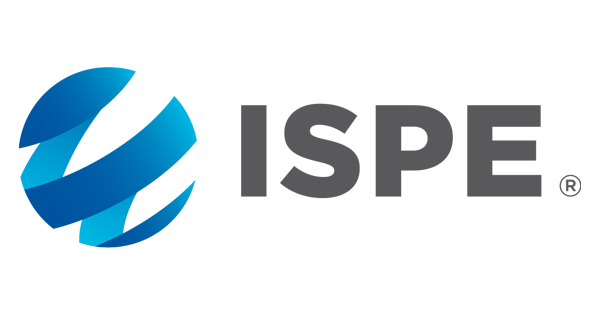PURCHASE ORDER TERMS & CONDITIONS
Supplier shall comply with the DELCO, LLC Quality System requirements as specified by the
DELCO, LLC Supplier Survey or purchase order. Supplier agrees to implement & maintain the
Quality / Inspection System during performance of this contract. CofC required with each
shipment. Process suppliers shall furnish a complete CofC with each shipment indicating the PO
#, specification number & revision, name of supplier and quantities accepted / rejected.
Material suppliers shall furnish chemical/physical test reports with each shipment identifying
the applicable specification and revision, actual chemical composition and physical properties,
melt, heat, batch, or lot. Additional DELCO, LLC Quality Requirements (DELCO, LLC clauses)
apply when referenced by PO. The supplier is not authorized to perform Material Review action
of nonconforming material. This clause does not apply to contracts for non-deliverable goods or
services. Acknowledge promptly upon receipt of order. No charges for packing or crating unless
listed.
GENERAL TERMS & CONDITIONS (GTC’s)
RIGHT OF ENTRY. The buyer and buyers customer, and their customers, or any applicable
regulatory agency will have the right to enter the sellers facility to perform inspection or ensure
compliance to the contract at any level of the supply chain.
ACCEPTANCE of this order, or the initiating of any process, or the furnishing of any product, or
the acceptance of payment, constitutes unconditional acceptance by the seller.
AMENDMENTS to this order, or DELCO, LLC terms and conditions shall be set forth in writing,
via purchase order change notice, and /or revisions to the purchase order terms and conditions.
DELCO, LLC will consider sellers request to modification of, or exception to, only if such request
is made in writing, prior to the acceptance of the order (ref. Acceptance clause)
PRICE as stated on this order covers all goods and services to be provided by the seller as
specified in the order. These prices also cover all charges for packaging, containers, and
transportation, unless specifically depicted otherwise on the face of the order.
SHIPMENT of goods and services under this order shall be F.O.B. as set forth on the face of the
order. Seller shall follow buyers instructions regarding method of shipment, except where
buyer has so stated on the face of the order.
SCHEDULE for delivery will be the responsibility of the seller. The seller shall not be held liable
for damages in respect to delivery delay due to causes beyond sellers reasonable control.
However, if the seller does not meet the delivery date as depicted on the face of the order, the
buyer may approve a revised delivery schedule, or terminate the order without liability for such
termination.
HAZARDOUS MATERIAL seller agrees to furnish the applicable material safety data (MSDS)
sheet(s) with each shipment, for products designated by industry, state, or federal agencies as
hazardous material.
PACKAGING AND PROTECTION of the product shipped shall be in accordance with the DELCO,
LLC P.O. or best commercial practice to protect product from damage and/or deterioration.
CANCELLATION shall remain the right of the buyer and may be initiated at any time.
TOOLING furnished by DELCO, LLC shall be maintained indoors, the seller is responsible to
ensure adequate care is utilized within their facility, to maintain the tooling in good working
condition. Any damages to this tooling, while in the care of the seller shall be reported to the
DELCO, LLC buyer in writing. DELCO, LLC shall disposition damaged tooling prior to further
processing by the seller. Seller rework of DELCO, LLC furnished tooling shall be authorized in
writing.
QUALITY ASSURANCE. The supplier shall comply with the DELCO, LLC quality system
requirements as specified by the DELCO, LLC supplier survey or purchase order. Supplier agrees
to implement and maintain the quality or inspection system during the performance of this
contract. An authorized certificate of conformance is required with each shipment. Process
suppliers shall furnish a complete certificate of conformance with each shipment indicating the
P.O. number, specification number and revision, name of supplier and quantities accepted and
rejected. Material suppliers shall furnish chemical/physical test reports with each shipment
identifying the applicable specification and revision, actual chemical composition and physical
properties, melt, heat, batch, or lot. Additional DELCO, LLC quality requirements (DELCO, LLC
QR Clauses) apply when referenced by P.O.. The supplier is not authorized to perform material
review action of nonconforming material. Note: this clause does not apply to contracts for
DELCO, LLC non-deliverable goods or services.
NONCONFORMANCE’S upon acceptance of a DELCO, LLC purchase order, the supplier agrees
that DELCO, LLC is entitled to reimbursement of DELCO, LLC labor and material costs associated
with seller responsible nonconformances and damages. The Supplier agrees to notify DELCO,
LLC of any non conforming product, the disposition of Non Conforming product such as rework
or repair shall be approved by DELCO, LLC prior to shipment.
PROCESS CHANGES The supplier agrees to notify DELCO, LLC of any changes in product and/or
process, changes of suppliers, changes of manufacturing facility location and where required
obtain organizational approval.
SUPPLY CHAIN The supplier agrees to flow down to its supply chain any applicable
requirements including customer requirements.
RECORD RETENTION The supplier agrees to maintain records a minimum of 5 years or longer
as specified in the purchase order. Examples of records are: Deliverable and non-deliverable
software verification & validation, First article inspection reports, In process / final inspection &
test records, Training records, Manufacturing / fabrication records (e.g., planning sheets,
routers, etc.,), Nonconforming material disposition, Procurement documents (supplier placed
orders), Process control records (used as acceptance criteria), Radiographs, technique sheets
and related acceptance reports, Receiving inspection records (e.g., test reports, material
certifications, etc.)
SPECIAL QUALITY REQUIREMENTS
The supplier shall implement a Quality System in compliance with ISO9001. (Section 4.2 and
4.19 excluded)
The supplier shall implement a Quality System in compliance with SAE AS9100. (Section 4.2 and
4.19 excluded)
The supplier and supplier subcontractors shall meet an maintain a Calibration System in
compliance with Calibration System Requirements of ISO10012 or ANSI Z540-1.
DELCO, LLC Source Inspection and/ or Customer Verification is required at supplier facility prior
to shipment. DELCO, LLC will place an Inspection Stamp on the supplier shipper to indicate
DELCO, LLC acceptance. Contact DELCO, LLC at least 48 hours prior to shipment from supplier
facility.
Government Source Inspection is required at supplier facility prior to shipment. Supplier shall
contact DELCO, LLC and applicable Government Representative to arrange for Government
acceptance prior to shipment from supplier facility.
The supplier shall perform and document a complete First Article Inspection Report (FAIR)
including 100% of B/P or specification requirements. One copy of supplier FAIR will be furnished to DELCO, LLC Inc. along with the first shipment for this PO/contract.
The supplier shall implement and maintain a Key Characteristics (KC) control program
acceptable to DELCO, LLC.
The supplier shall provide an Inspection Report (IR) identifying engineering requirements and
actuals. Use of supplier or DELCO, LLC inspection form is acceptable. One copy of the IR shall be
furnished to DELCO, LLC representing each manufacturing lot.
The supplier shall perform 100% inspection of the DELCO, LLC noted characteristics, a record of
the inspection results shall be provided to DELCO, LLC, sampling inspection is not allowed.
The supplier shall comply with the DELCO, LLC Special Quality Requirement noted (As defined
by DELCO, LLC QA):



